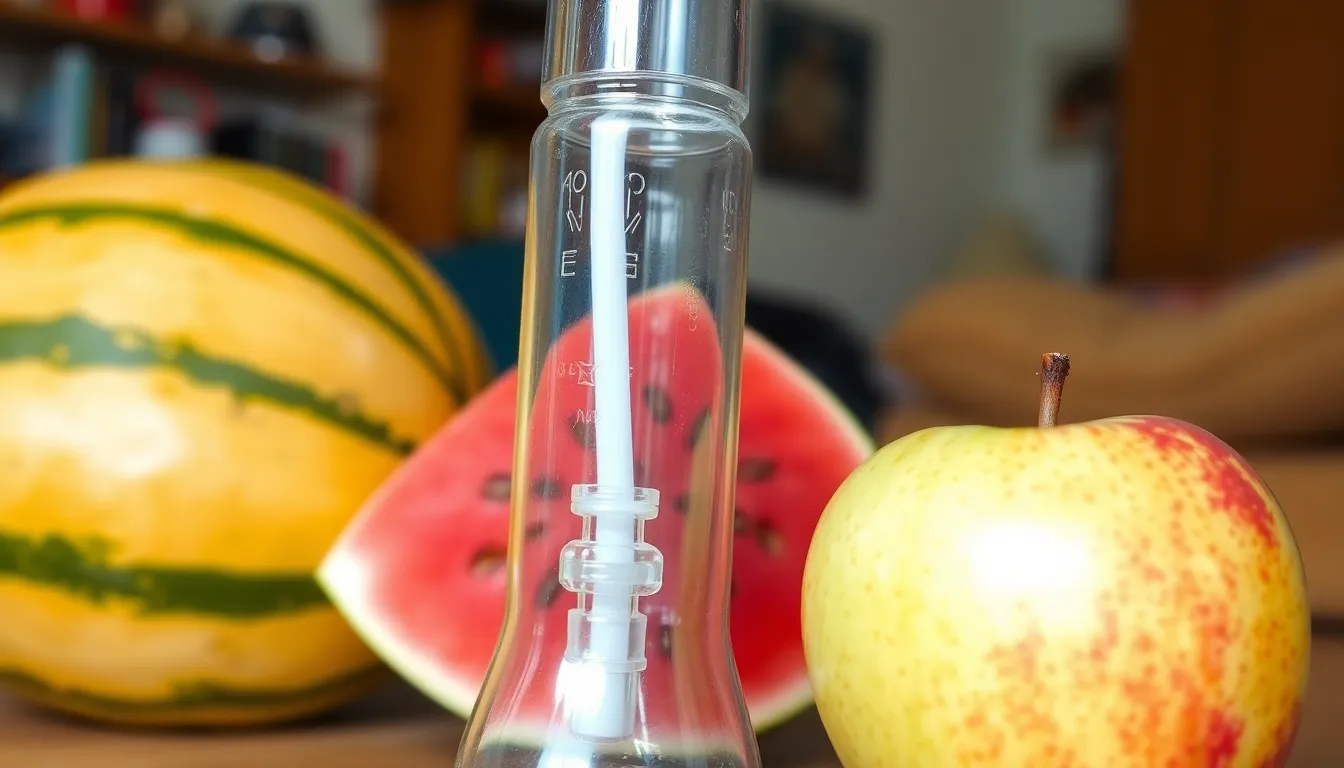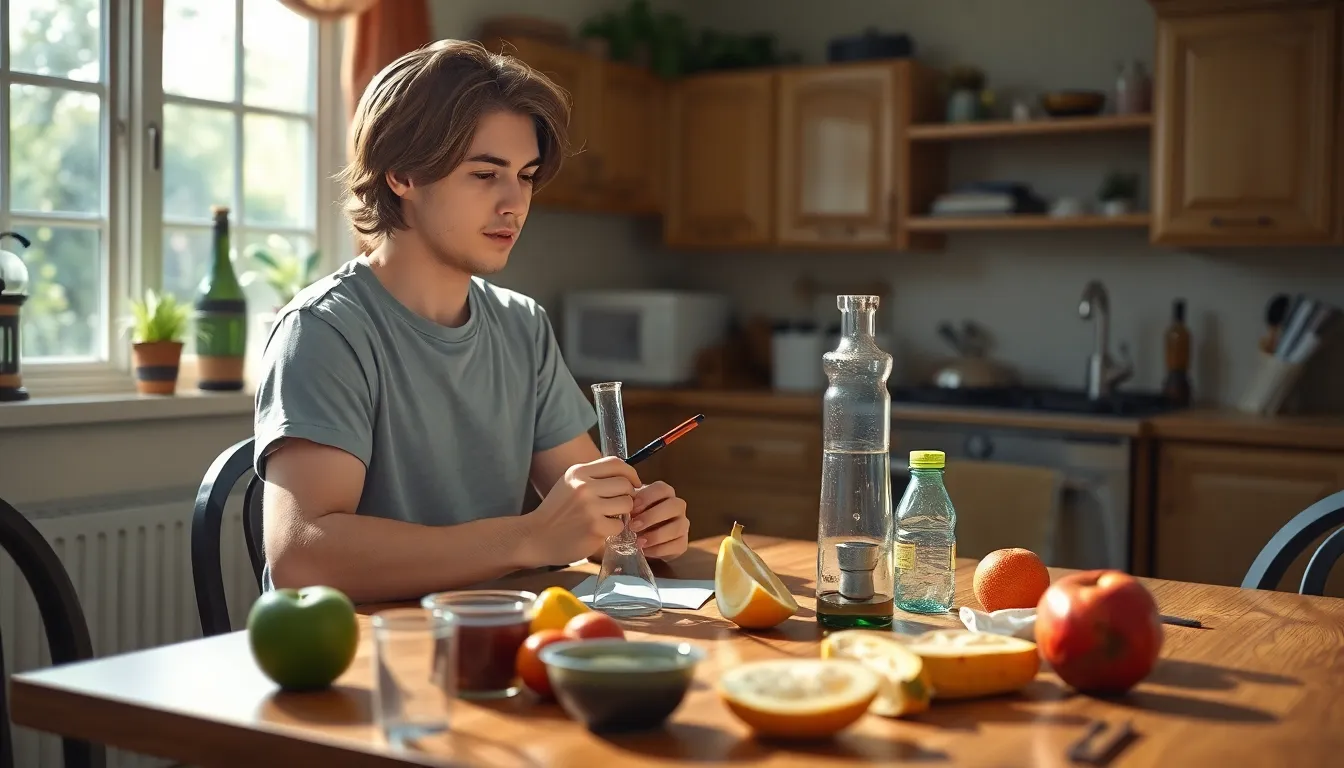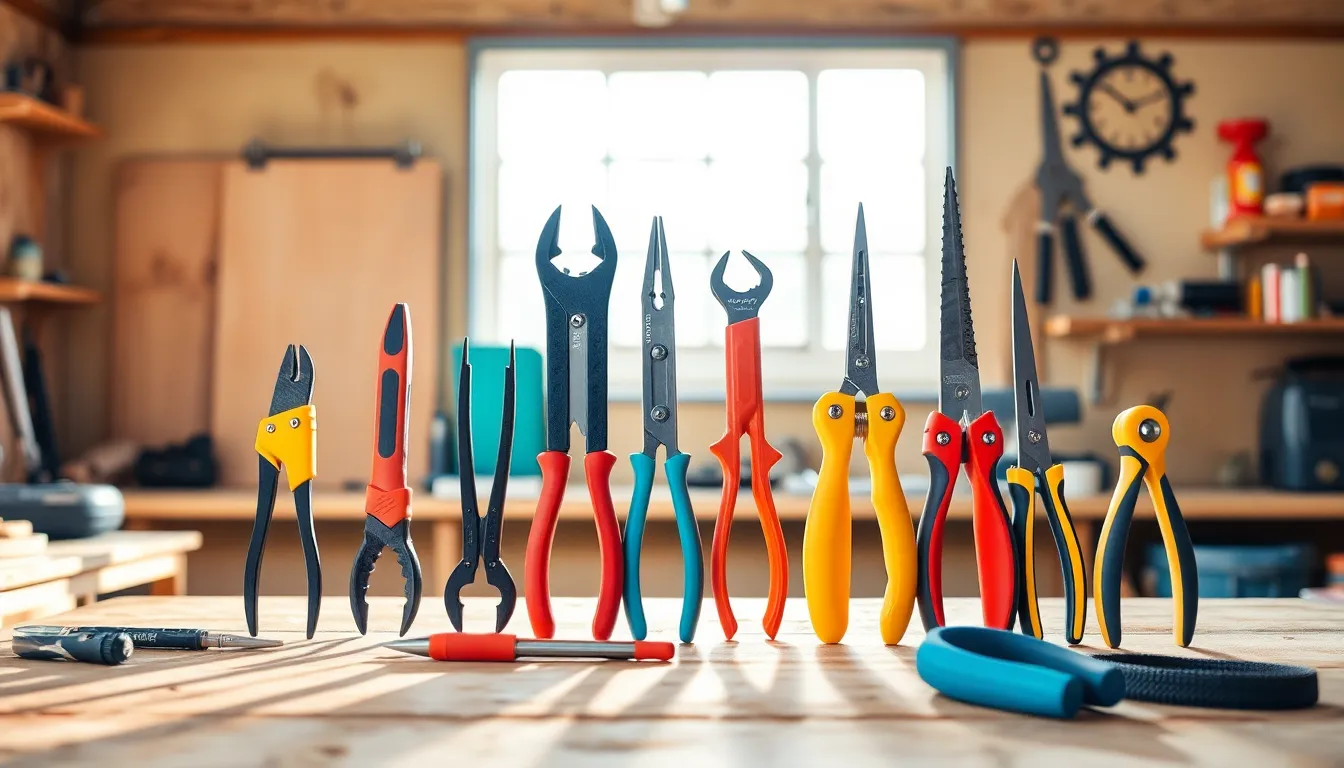Crafting a homemade bong can feel like a rite of passage for many enthusiasts, but what happens when you’re out of foil? Panic sets in, right? Fear not! There’s a world of creativity waiting to be unleashed, and it doesn’t require a shiny roll of aluminum.
Table of Contents
ToggleUnderstanding the Basics of Bong Design
Bong design relies on several key components that facilitate effective smoke filtration. The base serves as a water chamber, while a bowl holds the material. A downstem connects the bowl to the water, allowing smoke to travel through.
Materials used in crafting a bong can vary widely. Glass, plastic, and even fruit or vegetables make excellent bases. Each material influences the smoking experience. For instance, a glass bong typically enhances flavor, while a plastic one might alter the taste.
Size matters significantly in bong design. Larger bongs provide a greater volume of water and air, often leading to smoother hits. Smaller bongs offer convenience for portability but may produce harsher smoke.
Shape influences airflow as well. Straight tubes create direct paths for smoke while percolators disperse it through the water, enhancing filtration. Each design offers distinct advantages in terms of cooling and filtering smoke.
Airflow dynamics play a critical role in a bong’s performance. Proper airflow helps prevent clogging and ensures smooth inhalation. Ensuring that the downstem is submerged adequately enhances the overall experience.
When switching from traditional materials like foil, creativity comes into play. Options like a pen tube or an apple can effectively substitute for a bowl. These alternatives provide flexibility without sacrificing functionality.
Experimentation remains essential in bong crafting. Trying out different materials and designs helps individuals find what works best for their preferences. Sharing insights can lead to new ideas and improve the overall smoking experience.
Alternative Materials for Bong Construction

Creating a bong without aluminum foil is simple using alternative materials. Options like plastic bottles or fruits and vegetables can produce effective and enjoyable results.
Using Plastic Bottles
Plastic bottles serve as excellent bases for homemade bongs. They are readily available and come in various sizes. Cut a small opening near the bottom for the downstem placement. The airtight seal produced at this junction improves smoke filtration. Choose a bottle with a wide mouth for easier inhalation. Heavier plastic bottles enhance durability, making them suitable for repeated use. Experiment with different bottle sizes for unique airflow characteristics.
Using Fruits and Vegetables
Fruits and vegetables also work surprisingly well for crafting bongs. A hollowed-out apple or watermelon provides a natural and flavorful design. Make a downstem using a straw or similar object inserted into the fruit. The natural moisture from the produce aids smoke filtration while adding subtle flavors. Carving the fruit’s inner core allows for better airflow. Durability varies, so use more rigid options like pumpkins for longevity. Different fruits can yield distinct experiences, enhancing each session’s enjoyment.
Step-by-Step Guide to Making a Bong
Crafting a bong from everyday materials is straightforward. Follow these simple steps to create your own.
Preparing the Base
Select a plastic bottle as the base for your bong. Cut the bottle about one-third from the bottom to create space for the water. Fill the bottom with water until it covers about one to two inches above the bottom. Ensure that the bottle remains watertight. Add ice if desired for a cooler smoke. A securely sealed base provides improved filtration for the smoke.
Creating the Downstem
Use a pen or similar object to fashion a downstem. Remove the ink tube from the pen to create a hollow channel. Insert the downstem into the side of the bottle, angled downward at about a 45-degree angle. Ensure it’s submerged in the water. An airtight fit is crucial, so using tape or a sealant can help prevent air leaks.
Adding the Bowl
To create a bowl, find a suitable item like a small metal socket or a piece of fruit. If using fruit, hollow out a small cavity for the herb. Once prepared, attach the bowl to the top of the downstem securely. Ensure it can hold the herb without falling through. A well-sized bowl allows for optimal packing and burning of the material.
Tips for Improving Your Bong Experience
Experiment with water levels in the bong. Proper water levels enhance filtration and can drastically change the smoothness of hits. Adjust the height to find the optimal balance for individual preferences.
Consider the size of the bowl. A larger bowl accommodates more material, allowing for bigger hits. Smaller bowls provide quicker sessions, catering to those who prefer milder experiences.
Choose the right material for the downstem. Glass downstems generally offer superior flavor, while metal options are durable and affordable. Each material impacts the overall taste and quality of smoke.
Add ice to the bong for a cooler hit. Ice not only cools the smoke but also enhances the smoothness of inhalation. Include an ice catcher in the design for maximum effectiveness.
Use flavor additives for a unique experience. Infusing the water with mint leaves, fruit slices, or herbs adds aromatic qualities and enhances flavor. These simple additions can elevate the entire smoking session.
Monitor cleaning routines for optimal performance. Regularly clean bongs to ensure untainted flavors and smooth hits. Specific cleaners and tools are available to maintain cleanliness and performance effectively.
Stay mindful of your surroundings. Ensure a safe and comfortable environment to enjoy the bong experience fully. Choosing a relaxed setting contributes significantly to enjoyment.
Explore various smoking techniques. Different methods, such as carb techniques or deep inhalations, affect the overall experience. Practice different approaches to discover what suits personal preference best.
Safety Precautions When Using Homemade Bongs
Safety remains crucial when using homemade bongs. Always ensure that materials used for construction are non-toxic. Plastic should be safe for food use; avoid any items that might release harmful chemicals when heated.
Monitoring the construction process is vital. Verify that all connections, like the downstem sealed in the bottle, are airtight. An effective seal prevents smoke leaks, ensuring a smoother experience.
Using clean water in the bong is important for filtration. Changing the water regularly reduces contaminants and enhances flavor. It’s advisable to test the water level to ensure optimal filtration while avoiding spills.
Placement should consider ventilation in the smoking area. Good airflow helps prevent smoke buildup, reducing irritation. Using the bong outdoors is beneficial if possible, as it allows for fresher air circulation.
Keeping cleaning supplies handy ensures maintenance of the bong. Regularly cleaning removes resin buildup, which can impact flavor and performance. Utilize brushes and non-toxic cleaners to maintain a satisfactory smoking experience.
Wear gloves when handling any materials that might cause skin irritation or allergies. This practice adds to personal safety, providing further protection during the construction and usage process.
Being mindful of surroundings enhances overall safety. Using a homemade bong responsibly contributes to a safer and more enjoyable experience for everyone involved.
Crafting a homemade bong without foil opens up a world of creativity and experimentation. By utilizing everyday materials like plastic bottles or even fruits, enthusiasts can create unique smoking devices that enhance their experience. The focus on proper construction and airtight seals ensures effective smoke filtration while allowing for personalization.
Safety remains paramount throughout the process. It’s essential to choose non-toxic materials and maintain cleanliness to enjoy the best flavors and performance. As they explore different designs and techniques, users can discover what resonates with their preferences. This journey not only fosters innovation but also encourages responsible use, making the art of bong-making a rewarding endeavor.





